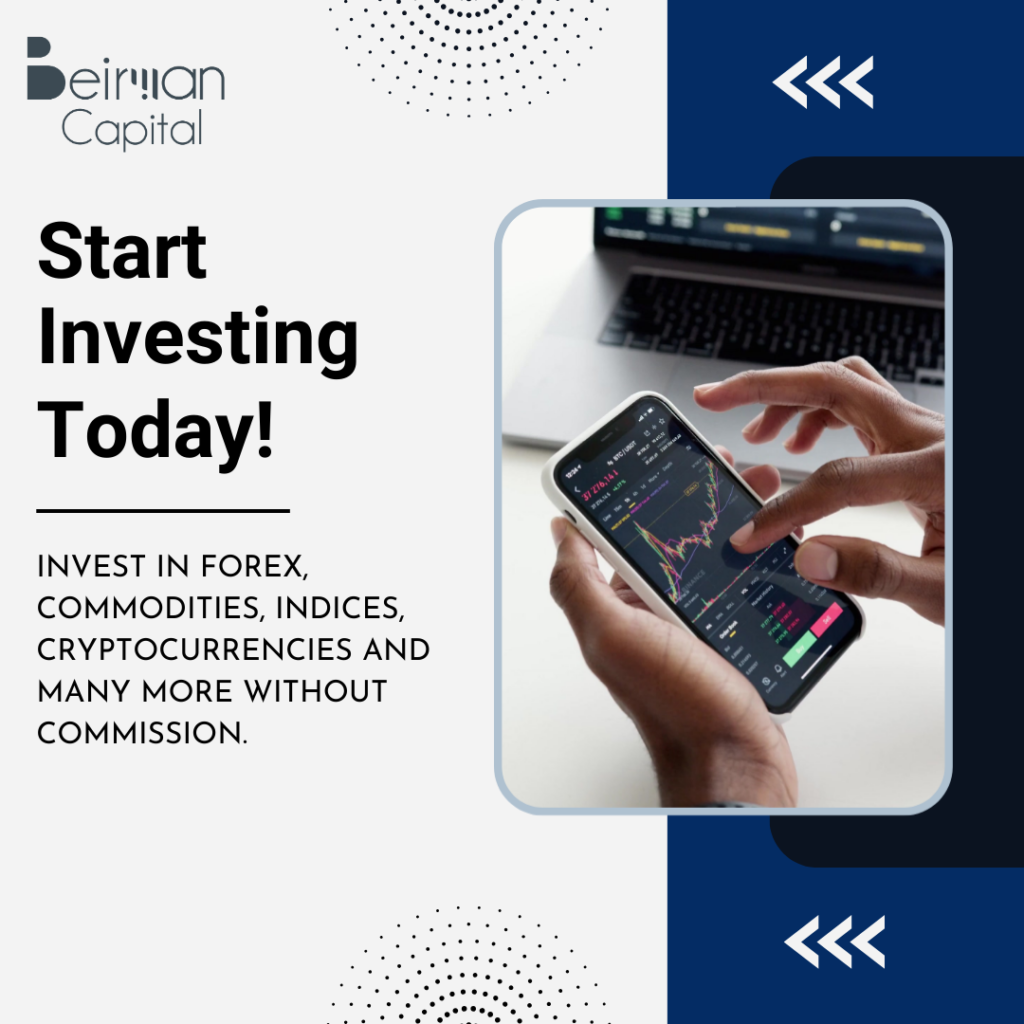CFD Trading Explained: A Complete Beginner’s Guide
Learn CFD trading from basics to strategy. Understand how CFDs work, their pros, and risks in this simple step-by-step guide.
Table of Contents
CFD trading refers to trading on the price difference of an asset without possession. It enables individuals to buy and sell gold, oil, stocks, or currencies by guessing whether the prices will increase or decrease. Such trading may provide additional profit opportunities, yet it is highly risky due to leverage. This blog will describe what CFD trading is, how it operates, and its advantages and disadvantages. Beirman Capital has provided this guide to enable the reader to learn and understand CFD trading better.
What is CFD Trading?
CFD is an abbreviation of Contract for Difference. It is a contract between a trader and a broker to trade the difference in price of an asset between the time a trade is opened and when it is closed. In CFD trading, you do not purchase or own the actual commodity, such as gold or a stock; you just trade on its price movement.
When the price is favourable to you, you make a profit. When it works against you, you lose. The popularity of CFDs lies in their ability to allow traders to trade a large number of markets with less capital; however, they are also highly risky.
How Does CFD Trading Work?
CFD trading is based on the ability to predict the increase or decrease of the price of an asset. You buy (go long) when you believe the price will increase. You sell (go short) when you believe it will fall.
You are able to trade CFDs regularly, even several times a day. This has made CFDs attractive to short-term traders who wish to exploit small price changes. Trading can, however, tend to add to the cost, like spreads or overnight fees, and therefore, it is very important to manage your risk.
CFDs are typically traded within the normal market hours of the underlying asset. After-hours trading is also available in many brokers, which provides traders with an opportunity to respond to the events in the global market. Remember that liquidity can be reduced and the spread can be increased at such periods, and one should be careful.
Key Features of CFD Trading
CFD trading is now one of the most popular ways of trading in the global markets. It provides flexibility to the traders, increased access and control over their trading style. We will consider the key aspects that make CFD trading effective and unique.
1. Trade on Price Movements
You are able to make money when prices increase or decrease without having the actual asset.
2. Leverage and Margin
CFDs enable you to trade bigger trades using a smaller deposit. CFDs can be traded even with accounts less than $25,000, though risk management is paramount.
3. Access to Global Markets
CFDs provide access to stocks, forex, commodities, and indices, among others.
4. No Expiry or Ownership
CFDs do not have an expiry date as opposed to futures or options. You can hold trades as long as you wish without having the asset in your possession.
Advantages of CFD Trading
Numerous advantages of CFD trading make it popular among traders. It enables individuals to easily trade in various markets using less money and with more flexibility. The following are just a few reasons why CFD trading is favoured by many traders.
1. Any Direction the Market Goes:
In CFD trading, you can make money regardless of whether the market is moving up or down. You purchase (go long) when you believe that prices are going to increase and sell (go short) when you believe that prices are going to decrease.
2. Trading with Small Capital:
CFDs operate on leverage, meaning that you do not require a large sum to begin. With a small deposit known as margin, you are able to trade a significantly greater value.
3. Entry to International Markets:
With CFDs, you can trade in gold, oil, forex, stocks and even cryptocurrencies all under the same trading platform. This provides you with additional options and market opportunities.
4. Quick and Easy Trading:
CFD trading is easier and quicker since you do not own the actual asset. You are just exchanging the difference in price and not the product.

Risks of CFD Trading
CFD trading is not only exciting but also risky. Being aware of these risks will make you trade with less risk.
High Risk with Leverage
Leverage allows you to trade larger amounts of money with a small amount of money, but it can equally increase the losses in case the market turns against you.
Market Volatility
Prices may fluctuate rapidly, particularly when there is news or a big event, and this may result in losses at short notice.
Margin Calls
In case your account balance falls below the required margin, your broker can automatically close your positions, and you would incur losses.
Overnight or Holding Costs
Overnight CFDs can attract additional fees or charges, and this can decrease profits or cause losses in the long run.
CFD trading is a potentially profitable business, yet planning, risk management, and selection of the appropriate broker are highly significant.
CFD Trading Strategies for Beginners
Simple strategies may make it easier to trade CFDs. The following are some of the entry-level approaches to international markets:
Day Trading:
Buy and sell within the same day. High-frequency trading (HFT) can be used to capitalise on small price movements, but it may be costly and may result in risk accumulation.
Swing Trading:
Trades are held over a few days to identify short-term trends. Performs well even on smaller accounts.
News Trading:
Trade on the major world events, such as economic news or a company announcement. After-hours trading is available with some brokers, and it can be of use in news-based trades.
Technical Analysis:
Plan trades using charts and indicators, such as RSI, MACD, or support/resistance levels. Use technical analysis together with other strategies to achieve improved results
Comparison with Other Trading Instruments
Features | CFD | Stocks | Futures | Options |
Ownership | No ownership, only price difference | Own the actual share | Contract for future delivery | Right to buy/sell, not ownership |
Leverage | High leverage possible | Usually no leverage | Moderate to high leverage | Can be leveraged depending on the premium |
Trading Direction | Can go long or short easily | Mostly profit when the price rises | Long or short, it depends on the contract | Can profit from rising or falling markets |
Expiry | No expiry | No expiry | Fixed expiry date | Fixed expiry date |
Markets Access | Stocks, forex, commodities, indices, crypto | Stocks only | Commodities, indices, forex | Stocks, indices, commodities |
Capital Requirement | Small deposit (margin) | Full share price | Margin required | Premium required only |
Risk | High if not managed | Lower (price risk only) | High (leverage + contract obligations) | Limited to premium paid, but can be complex |
How to Open a CFD Trading Account
It is not a complicated process to start CFD trading when a reputable and regulated broker is selected. Beirman Capital is the best place to open your first CFD account because it is a safe and easy-to-use platform to enter the global markets.
Step 1: Select Beirman Capital as your broker
Select Beirman Capital as your trusted broker. Its secure platform allows you to trade stocks, forex, commodities, and indices, among others, using one account.
Step 2: Select Your Account Type
Select a trading account that fits your trading experience and objectives. Beirman Capital offers both beginner and advanced trader options.
Step 3: Complete Your Registration
Complete your financial and personal information. Activation is easy and prevents account security.
Step 4: Deposit Funds
Fund your account easily. CFDs are margin traded, and thus a small deposit allows you to trade with bigger positions.
Step 5: Begin to Learn and Trade
When your account is open, you can have a preview of the platform, and start to launch your skills and begin to trade CFDs. Beirman Capital also provides educational materials to enable you to learn about strategies, risk management, and market trends.
Conclusion
CFD trading is a versatile and strong method of trading in the global markets, where you can make profits when prices are increasing and when they are declining. Although it has numerous opportunities, it is also associated with high risks, particularly when leverage and market volatility are not handled with caution.
In Beirman Capital, you will have the opportunity to open your CFD trading account and teach yourself how to trade step by step. A Free demo account is also available to us, and thus you will have the chance to practice and get familiar with the market before the real trade starts. We do this by offering you strategies, risk management and confidence to trade at your own pace.
Open your CFD trading account now open your account with Beirman Capital.
and start to learn with actual market experience.
Get Complete Forex Trading Assistance



